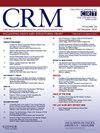经导管主动脉瓣置换术的当代风险模型:综述。
IF 1.6
Q3 CARDIAC & CARDIOVASCULAR SYSTEMS
引用次数: 0
摘要
主动脉瓣狭窄(AS)是老年人最常见的瓣膜性心脏病,需要干预治疗。严重的AS症状,如果不及时治疗,通常与预后不良有关。在过去的二十年里,经导管主动脉瓣置换术(TAVR)领域取得了重大进展,使其成为治疗严重as的一种替代手术主动脉瓣置换术(SAVR)的方法。多个随机临床试验已经证明TAVR与SAVR在高、中、低风险手术候选人中的疗效和安全性相当。在此过程中,开发了传统手术和tavr特异性的多重风险评分,以更好地对患者进行风险分层,并指导围手术期管理和患者咨询。本综述旨在讨论目前可用的TAVR患者风险预测的风险模型,强调其优势、局限性以及对不同患者群体的适用性。本文章由计算机程序翻译,如有差异,请以英文原文为准。
Contemporary risk models for transcatheter aortic valve replacement: A narrative review
Aortic stenosis (AS) is the most common form of valvular heart disease in older adults requiring intervention. Severe symptomatic AS, if left untreated, is typically associated with a poor prognosis. Over the past two decades, there have been significant advances in the field of transcatheter aortic valve replacement (TAVR), leading to its emergence as an alternative to the well-established surgical aortic valve replacement (SAVR) for treating severe AS. Multiple randomized clinical trials have demonstrated comparable efficacy and safety outcomes of TAVR vs SAVR in high, intermediate, and low-risk surgical candidates. In the process, multiple risk scores, both traditional surgical and TAVR-specific, have been developed to better risk stratify patients as well as guide periprocedural management and patient counseling. This review aims to discuss the currently available risk models for risk prediction in TAVR patients, highlighting their strengths, limitations, and applicability to different patient populations.
求助全文
通过发布文献求助,成功后即可免费获取论文全文。
去求助
来源期刊

Cardiovascular Revascularization Medicine
CARDIAC & CARDIOVASCULAR SYSTEMS-
CiteScore
3.30
自引率
5.90%
发文量
687
审稿时长
36 days
期刊介绍:
Cardiovascular Revascularization Medicine (CRM) is an international and multidisciplinary journal that publishes original laboratory and clinical investigations related to revascularization therapies in cardiovascular medicine. Cardiovascular Revascularization Medicine publishes articles related to preclinical work and molecular interventions, including angiogenesis, cell therapy, pharmacological interventions, restenosis management, and prevention, including experiments conducted in human subjects, in laboratory animals, and in vitro. Specific areas of interest include percutaneous angioplasty in coronary and peripheral arteries, intervention in structural heart disease, cardiovascular surgery, etc.
 求助内容:
求助内容: 应助结果提醒方式:
应助结果提醒方式:


